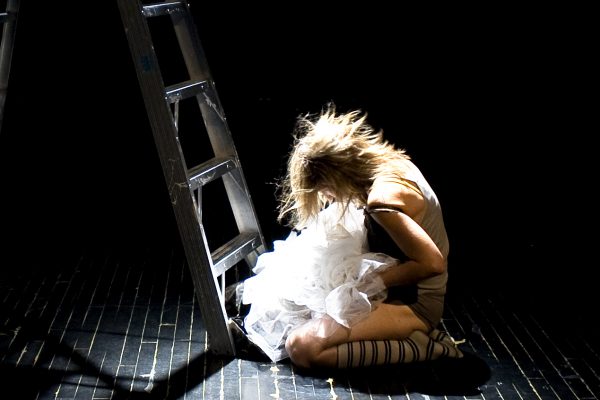Dancers spend months preparing physically, mentally and emotionally for a production. In spite of the high costs on their energy, most artists consider the thrill of performing worth the blood, sweat and tears. But what happens after a show, when the applause dies down and the curtain falls?
If satisfied with their performance, dancers usually feel joy, excitement and relief. Within a few days, this emotional high may turn into post-performance depression (PPD). Defined by J. Taylor and E. Estanol, in Dance Psychology for Artistic and Performance Excellence, PPD is “the combination of the physiological decline and the psychological loss of purpose” and “often leads to down emotions such as sadness, listlessness, irritability, and general malaise.”
According to the authors, PPD is a necessary process that helps dancers recover physically and psychologically from the stress of high-level performing. Once a performance goal is achieved, dancers usually go through a brief mourning period of the joys and sense of purpose invested in the project. Also, because personal identity (sense of uniqueness and continuity) is so ingrained in dance practice, artists may feel challenged once they return to daily living. Inner silence creeps in: a nameless malaise often remains unidentified by performers.
PPD symptoms resemble other types of depression and range in intensity and duration, depending on dancers’ artistic experience, personality and coping abilities. Symptoms may include one or several of the following: physical and mental fatigue; a feeling of emptiness; irritability; lack of motivation (especially in activities other than dance); loss of appetite or binging; negative self-talk and comparisons with others; emotional and social withdrawal; doubts regarding their artistic competence. Intense self-questioning arises: What’s the use? What do I do next?
Although PPD is common, few dancers talk about it. So I decided to interview ten professional dancers about their experiences and coping strategies. To various degrees, all the artists reported having felt one or more of these symptoms after an important show, a disappointing performance or receiving negative feedback. The mourning process is often particularly painful for independent performers without an upcoming contract or for dancers who retire unexpectedly.
Anik Bissonnette, artistic director of L’École supérieure de ballet du Québec, was a dancer with Les Grands Ballets Canadiens (LGBC). She recalls going through brief PPD episodes, three to seven days after every show. She felt worn out and had little motivation. She had doubts about her performance. The slightest negative remark affected her greatly. She coped in several ways: if she was pleased with her performance, she avoided getting into a state of euphoria, knowing that emotional highs lead to letdowns shortly after. Following performance, she needed time alone and would unwind doing housework or dancing quietly.
Her LGBC colleague Andrea Boardman dealt with her self-criticism after shows by staying in touch with her family. She practises meditation daily, which expanded her capacity to transform her anxiety and fears into appreciation and empowerment. These sources of fulfillment helped her maintain personal balance, especially during her difficult transition between retiring from the company and her engagement with La La La Human Steps.
On other hand, Anne Dryburgh of Ballet BC had high standards concerning her technical abilities and was rarely satisfied with her performances, in spite of her success. After a disappointment, her negative self-talk made her feel shameful. She would retreat in private, instead of celebrating with her friends. Eventually, her anxiety and PPD symptoms became so debilitating that she stopped dancing. After a long pause, she returned as an independent dancer.
When returning from long tours, Youri de Wilde, Sophie- Estel Fernandez (both with Les Ballets Jazz de Montréal) and Stéphanie Brochard (Sursaut Dance Company) always felt physically and emotionally out of sync with their loved ones even if they were happy to see them. These dancers learned to acknowledge their state, share their feelings and to accept them. They took necessary time to rest and indulge in other activities than dance, before returning to the exhilaration of performing.
Ultimately, PPD becomes more manageable once performers recognize and work through their symptoms as a normal recovery and self-regulation process, helping them cultivate a healthy perspective toward their dance.
If PPD symptoms become severe or persistent, it is advised to seek help from a mental health professional.
Tagged: Healthy Dancer, Various, All






